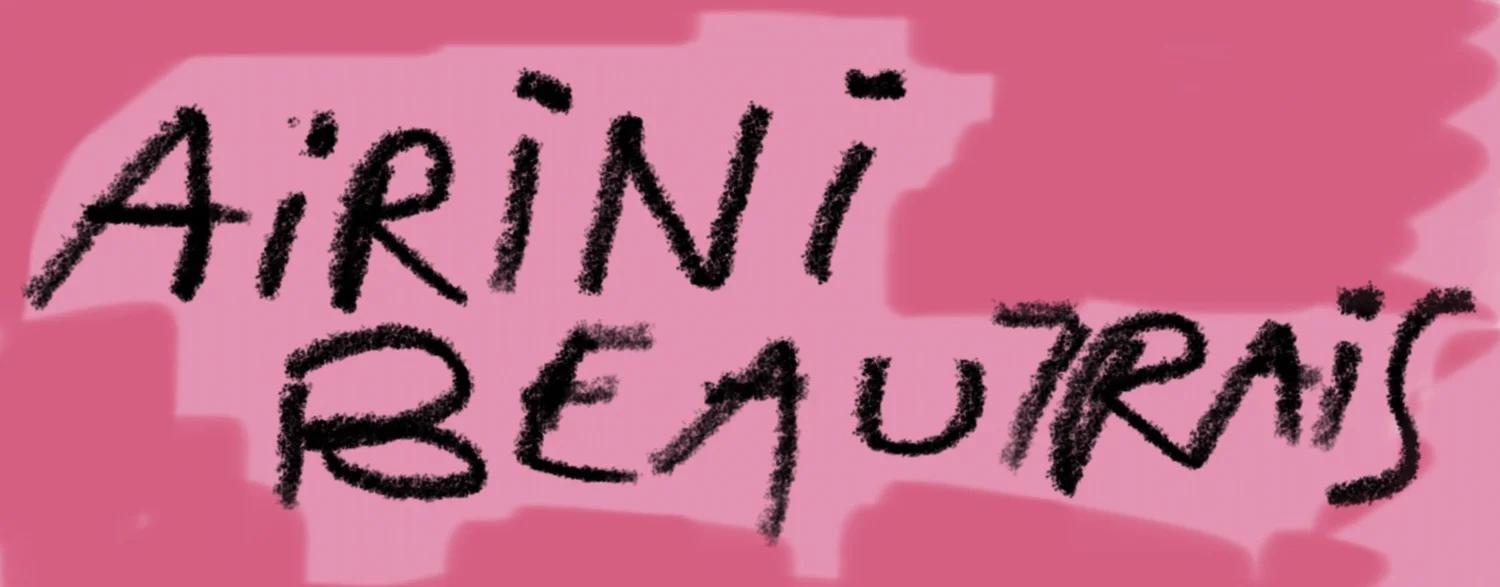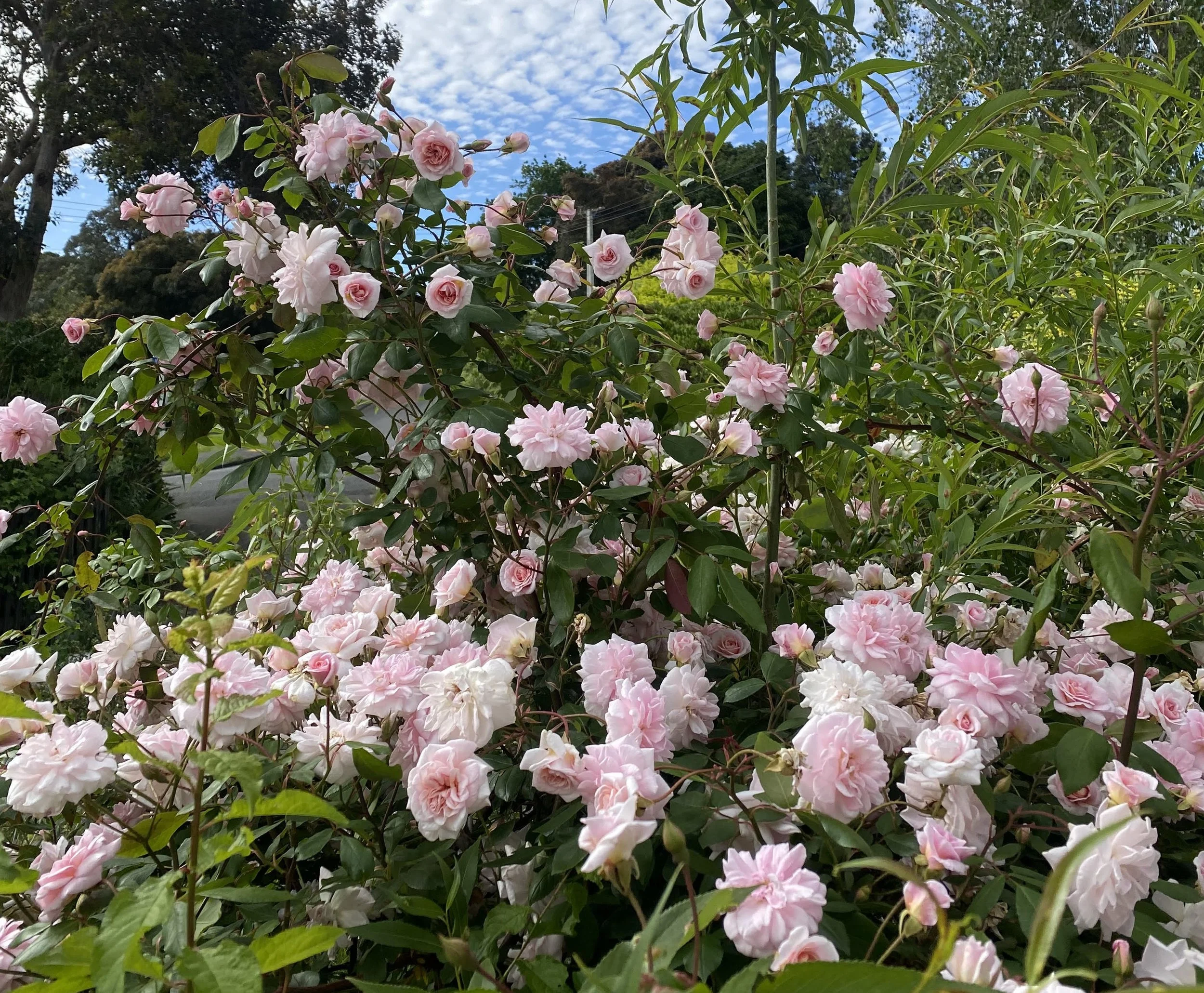The Wheel of the Year
Last Friday, 31 October, I put some lollies and other items in a basket, and went out into my garden. As I weeded couch grass, little costumed characters appeared in the driveway: Witches, ghosts, burritos, Mario and Luigi. I let them choose something from the basket. The apple, carrot, salami and cheese all got eaten. So did a bunch of lollies. I don’t feel great about giving other people’s children sugar, having seen the after-effects of my own children eating about a kilo of it in the back seat of the car after ‘Trunk or Treat,’ while my back was turned. The come-down was intense. But as one of my own kids was currently out roaming the streets trick-or-treating with friends, I felt it was only fair for me to contribute.
As I weeded, the earth breathed vitality all around me. This time of year, as my dad says, is ‘peak photosynthesis.’ Deciduous trees have come into leaf. Roses are flowering. The evening air hovers with insects. Goldfinches feed on the puha seed heads. Frogs are croaking in the local lakes and ponds. The air feels fecund.
Cecile Brunner rose - So fecund right now
I believe we can celebrate whatever we want, whenever we want. If you want to celebrate your own birth on any day of the year, why not? If you want to celebrate Easter and Christmas at the calendar dates that align with the Christian church around the world, that makes sense. But the Wheel of the Year is different – because it is literally the Wheel of the Year – a series of festivals based on the sun. The eight spokes of the wheel are aligned with the solstices, equinoxes, and the ‘cross-quarter’ festivals which fall half-way between these points. The sun does hemispheres. On the Summer Solstice (June solstice) in the Northern Hemisphere, the sun appears to reach its highest position in the sky, and is directly overhead at the Tropic of Cancer. On the Summer Solstice (December solstice) in the Southern Hemisphere, the sun appears to reach its highest position in the sky, and is directly overhead at the Tropic of Capricorn. The vernal and autumnal equinoxes – when the sun is directly overhead the equator – also occur at opposite times depending which hemisphere you are in, due to the difference in seasons.
Halloween is celebrated at the end of October, and is often conflated with a related Celtic festival, Samhain. Friday, October 31st was not ‘Samhain’ in Aotearoa New Zealand, because Samhain is the cross-quarter festival that occurs between the autumnal equinox and the Winter solstice. This year (2025), the Southern Spring or vernal equinox occurred on the 23rd September (also the start of Libra season in the tropical zodiac) and the Southern Summer solstice will take place on the 22nd December, the start of tropical Capricorn season. Being about half way between these two dates means it is – you guessed it – Beltane! That’s why all the human children and baby animals are so full of beans. Because the Gregorian calendar is not aligned to any particular astronomical events, the calendar dates for the Wheel of the Year will be slightly different each year. This year, Southern Beltane technically falls on the 7th November.
I think of Beltane as a time of wild, beautiful, fertile, abundant chaos. It’s a time to dress up: not as something invoking death, but something invoking life, like the Green Man, May Queen, or Jack o’ the Green. It’s a time to light a fire, jump over it, to eat, drink and be merry, and if you are that way inclined, for raucous and uninhibited celebration. My personal celebration of Beltane tends to be gentler, and involves working in the garden, giving thanks for the abundance of life. Sometimes we have an outdoor fire.
A little Beltane fire in our garden, 2019
I learned about the Southern Wheel of the Year as a child, as we celebrated the solstices in particular in the community where I grew up. I can also remember dancing around a May pole at some point. Halloween was less of a thing for kids growing up in Aotearoa New Zealand in the 1980s and 1990s. However, it was more recently, within the last ten years, that the cognitive dissonance involved in seeing the Halloween costumes and plastic pumpkins against a backdrop of green leaves and bursting flowers, helped remind me of my spiritual connection with nature and started me back on a path of intentional ritual and celebration. I feel thankful for that.
What about the thinning of the veil, and the remembrance of the dead? My personal feeling is that while Samhain is the most seasonally appropriate time for this focus, if you have dead from the Northern Hemisphere, they might also want to connect with you around the time of southern Beltane, which is Northern Samhain. Last year, around this time, I spent a week mostly in isolation with a gastro bug. I ended up deep-diving into my family history and drawing family trees. I discovered ancestors I had not heard of before, places I didn’t know my family was from, and names that changed their spelling through the generations. In a time when I couldn’t be around the living, this connection felt vital. I felt held and loved by my ancestors.
I also feel that while both festivals are potent, Beltane is the one where more chaotic energies could potentially emerge. I would be careful of doing any spiritual practice that opens the door to anything and everything. Just like I don’t want strangers on the internet knowing where I physically live, I don’t want weird shit from the ether turning up on my doorstep!
The year that we went to Trunk or Treat and the kids ended up in a bad sugar comedown, an American family dressed up in a spring theme, decorated their car boot accordingly, and set up a May pole. Another year, I went to a Halloween party dressed as a green goddess. Like the pōhutukawa being the ‘Christmas tree’ of Aotearoa, I think there are ways to hybridise festivals that keep everyone happy. Personally, I am deeply uncomfortable with what I think of as the ‘capitalist calendar’ which is mostly about profit, at the expense of the environment, and of the people who make the cheap, mass-produced tat we are encouraged to buy. For me, connecting with the Wheel of the Year is a way of honouring the earth. It is a way of being connected to nature, to understanding its rhythms and cycles, as well as the seasonal changes we experience, such as changes in mood and energy levels. It helps us to be better to the earth and to ourselves. It gives us eight celebrations. And it doesn’t have to cost anything: all you need is yourself and nature.
Planets and plants
Nicholas Culpeper - He had a cool moustache and knew lots about herbs
Recently I have been learning more about historical traditions surrounding the association of the classical planets with plants. I find this interesting in and of itself, but I am also enjoying using the planets and associated astrological constellations as an organising principle for plant rituals. The belief in planetary rulership of plants was popularised by Nicholas Culpeper in the 17th century; however, people had developed similar schemas earlier than this. As well as plants and star signs, the classical planets (Sun, Moon, Mercury, Mars, Venus, Jupiter, Saturn) have also been associated with days of the week, colours, notes of the major scale, and metals, amongst other things.
I have worked for many years as a science educator and come from a family of skeptics, or skeptic-adjacents. I know I am unusual having one foot in the science camp and one in the ‘magic’ camp. But to me, looking at these different systems of human meaning-making is endlessly fascinating. I hope to write more in future about the interactions between science, spirituality, mythology and tradition.
I am not a lifelong astrology adherent; however, during the past few years, I have enjoyed working with the structure provided by aligning new and full moons with the signs of the zodiac. I have always been interested in the spiritual aspects of nature, and of human relationships with other species and the natural environment. When I studied ecology and biodiversity for a Bachelor of Science, rather than losing spiritual beliefs, I found that science deepened these connections for me. Later, studying narrative theory as part of my PhD, I become interested in how people ‘narrativize’ all kinds of things. The human brain is a story-maker: it seems to really love narratives, and it seems to love narratives that involve people, or anthropomorphic characters, most of all. I think this is why we join the dots in the sky, make them into people, animals, characters from mythology, and form associations from there. As new planets, asteroids and comets are discovered via astronomy, they are also welcomed into the fold of astrology. I find this very cool! I have been interested in folklore for as long as I can remember. Folklore is collections of stories. Astrology is the folklore of the stars. Numerology is the folklore of numbers. It’s not that we would prefer a simpler explanation – astrology is extremely complicated – it’s that we would prefer a more human, more narrative one. Many of us would prefer to believe that the stars spell out our fates, than to believe that they are merely balls of gas hanging in a vacuum, just being balls of gas.
Astronomically speaking, the tropical zodiac dates do not line up with the constellations. Rather, they are based on degrees of the ecliptic (the orbital plane of the earth around the sun). Constellations are of course made up of stars that are varying distances from Earth, and the zodiac constellations are not exactly the same size. Depending on who you ask, the Sun appears to ‘pass through’ 13 constellations rather than 12 (including Ophiuchus, the snake), at dates that are roughly a month out from those specified by the tropical zodiac. Discovering this as a young person was disconcerting for a pedant like me, and for a long time if anyone asked me my star sign I would say something like ‘It doesn’t matter because the dates are wrong.’ Nowadays, I like to think of the zodiac as a mathematical ‘pie in the sky’ based on a set of animals and mythical figures seen in the stars by people living in the Middle East, long, long ago. This pie divides into a beautifully even 12 pieces. The number 12 also allows for even divisions into signs associated with the classical four elements, and into cardinal, fixed and mutable signs. So, if you are an Aries sun, you are born when the view of the sun from Earth is positioned against the portion of the sky assigned to the constellation of Aries, and this assignation is based off what was observed by Babylonians in the 1st millennium BC. Is this scientific? No. Is it fascinating? To me, yes.
Scientific and faith-based or mystical positions are not necessarily mutually exclusive. There are many living scientists who are also deeply religious or spiritual people. In the past, this crossover was very normal. Isaac Newton, one of the key figures of the Enlightenment, was also heavily into alchemy, the Occult and biblical prophecy. I see the scientific method as a very useful tool for obtaining knowledge, but I don’t want to limit my life, values and beliefs to ‘only things that can be demonstrated by science.’ That feels to me like shining a torch into a dark room and saying ‘only what is illuminated by the torch exists; nothing exists outside of this room.’ Likewise, I don’t like to make factual or literal claims that sound scientific but can’t be backed up. When it comes to the magical, the spiritual and the mystical, I can only talk about my personal experience.
Newton, by Godfrey Kneller. He was really into occult stuff.
Newton was working in a time when numerology was a prevalent belief, but he was probably more interested in it than the average person. It was Newton who defined the seven colours of the rainbow as red, orange, yellow, green, blue, indigo and violet, linking each colour to a note of the major scale. Seven is a favoured number in Western numerology, which can be linked to Judaeo-Christian tradition – God creates the universe in seven days. Before the invention of the telescope, five planets other than Earth were visible. The sun and moon were also classed as planets, making seven in total. Planets and their associated deities are still evident in weekday names, depending on the language – Saturday, Sunday, Monday, Mardi, Mercredi, Jueves, Venerdi. English has a fun mix of Greco-Roman and Norse gods ruling over the days of the week. A week is not an astronomical phenomenon, but seven is conveniently a factor of 28, and a lunar cycle is 29.5 days, so there are roughly 4 weeks in a month. Close enough!
Born around 27 years earlier than Newton, herbalist Nicholas Culpeper was also really into systems of organization, astrology, and assigning things to planets. Although planetary rulership of plants dates back earlier, it was Culpeper who systematized plant rulership in a way many herbalists and plant people are familiar with today. Because I really enjoy working with plants in ways that incorporate magical and ritual elements, such as green witchery and kitchen witchery, I really enjoy Culpeper’s system. Some of the herbs detailed by Culpeper were also assigned by him to a zodiac sign, but those that are not can be assigned based on the planetary ruler of that sign. For example, rosemary is governed by Saturn, so could also be associated with the signs of Capricorn and Aquarius. New moons and full moons in these signs would therefore be good times to work with rosemary. You could make a sachet, a saining wand, some focaccia bread, chew a rosemary twig, add the flowers to a salad, make incense, anoint yourself with rosemary essential oil, or add it to your bathwater. In doing so, you put intention into your interaction with the plant, and deepen your connection with it. Again, this is not ‘scientific’ – but it is creative, spiritual, magical and fun. I am all about that.
Alchemical table from Basil Valentine’s The Last Will and Testament, 1670. I just think it’s very cool.





